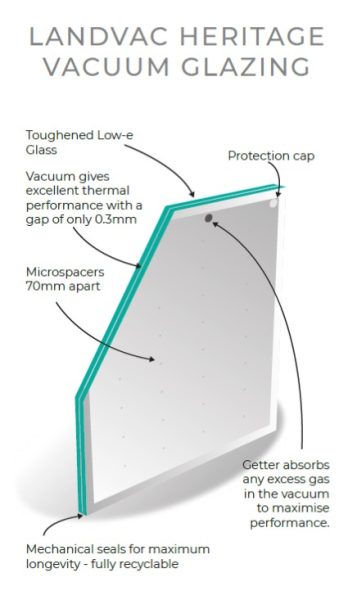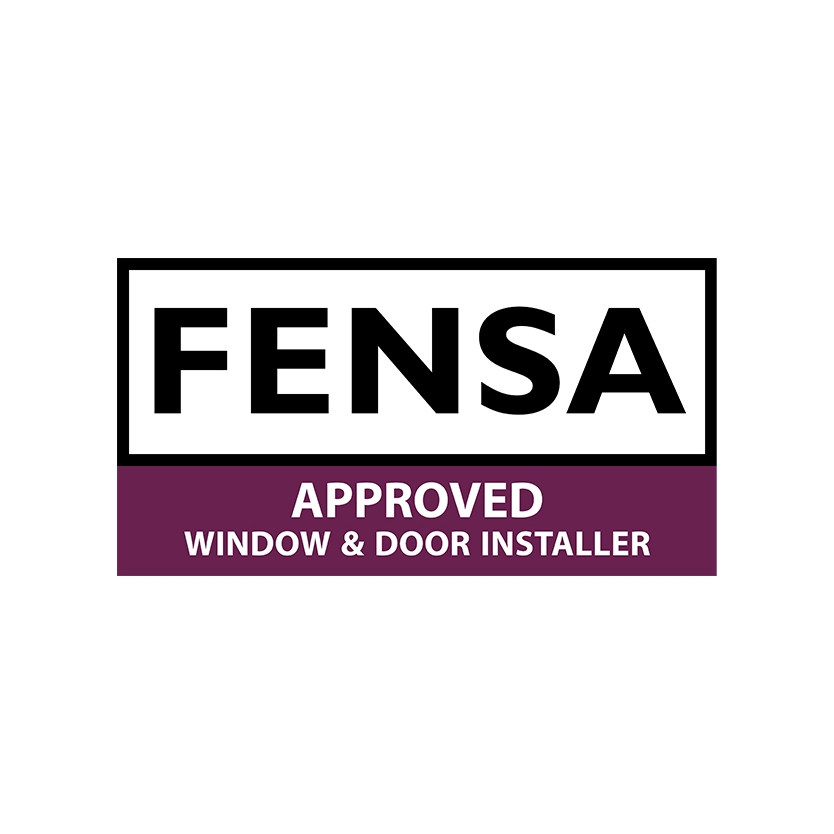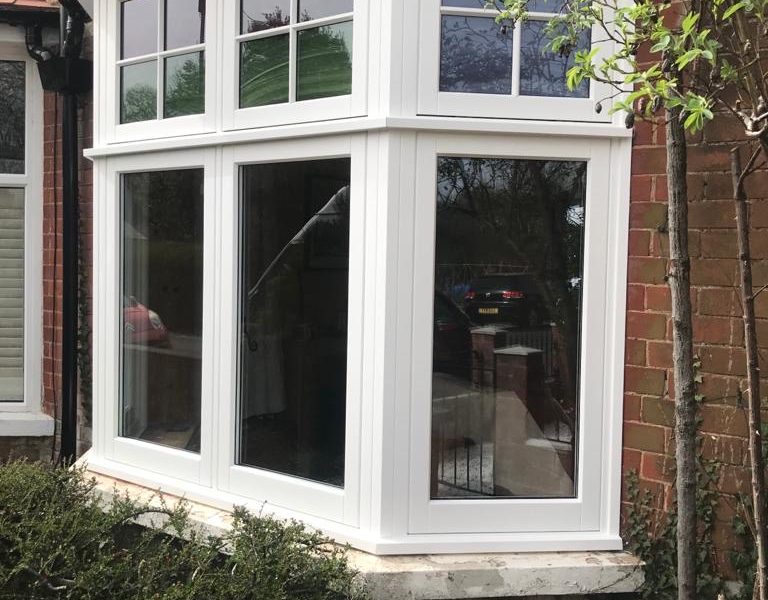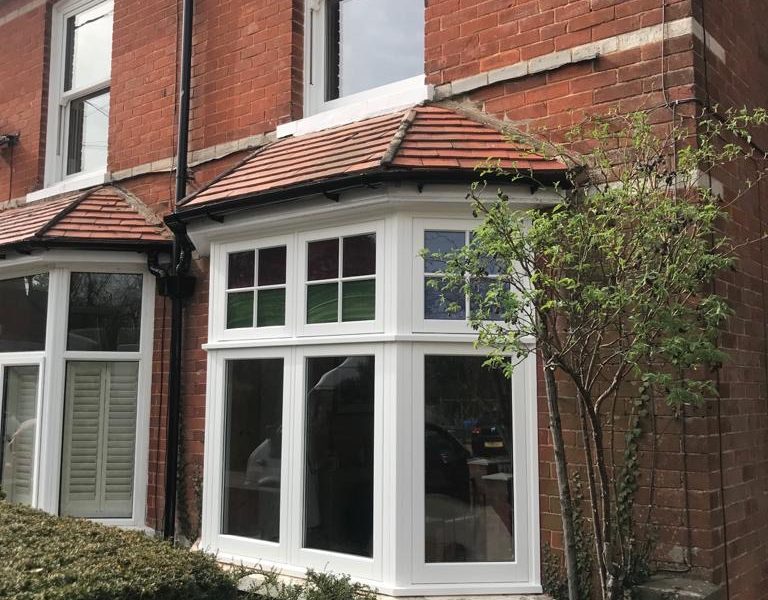
Timber - PVC - Aluminium - Windows, Doors & Conservatories in Hampshire
What Is Vacuum Glazing? A Guide to U-Values & Performance”
What Is Vacuum Glazing? A Guide to U-Values & Performance”
📌 Executive Summary: The “Impossible” Glass
- The Breakthrough: Vacuum Glazing (VIG) delivers the insulation of a thick triple-glazed unit (0.4 U-Value) in a pane just 8.3mm thick.
- The Heritage Key: It is the only high-performance solution that fits into original timber sash frames without ruining the sightlines.
- The Future: While expensive, it offers a 25+ year lifespan and outperforms gas-filled units on acoustics and longevity.
For decades, the glazing industry has been fighting a battle between Performance and Aesthetics. If you wanted energy efficiency, you had to accept thick, heavy double or triple glazing. If you wanted slim, elegant heritage lines, you had to accept cold, draughty single glazing.
Vacuum Insulated Glazing (VIG) has ended that war. It offers Passivhaus-level insulation in a unit that looks like single glazing.
Table of Contents
1. The Science: How a Vacuum Works
To understand why VIG is revolutionary, you need to understand heat transfer. Heat moves in three ways: Conduction, Convection, and Radiation.
- Standard Double Glazing stops heat using Argon gas. Gas is a poor conductor, but it still conducts some heat.
- Vacuum Glazing removes the gas entirely. It creates a vacuum between two sheets of glass.
Because a vacuum contains no matter (no molecules), heat cannot travel through it via conduction or convection. It is the perfect insulator. This allows a tiny 0.3mm gap to do the work of a 16mm gas cavity.
2. Inside the Unit: Getters & Pillars
Creating a vacuum in a flat glass unit involves some incredible engineering. If you remove the air, atmospheric pressure tries to crush the two panes of glass together with immense force.

The Micro-Pillars: To stop the glass touching, thousands of microscopic “pillars” or spacers are placed between the panes. In premium units like LandVac, these are spaced on a 20mm grid and are barely visible to the naked eye.
The Getter: Over 25 years, tiny amounts of gas might leach out of the glass material itself. To maintain the vacuum, a small “Getter” dot is placed inside the unit. This material absorbs any stray gas molecules, ensuring the vacuum (and your insulation) lasts for decades.
3. Head-to-Head: VIG vs. Triple vs. Double
How does the new technology stack up against the current market leaders? We compared LandVac Heritage against standard industry units.
| Feature | Vacuum Glazing (LandVac) | Triple Glazing | Standard Double |
|---|---|---|---|
| Centre Pane U-Value | 0.4 W/m²K (Best) | 0.6 – 0.8 W/m²K | 1.2 W/m²K |
| Total Thickness | 8.3mm (Ultra Thin) | 44mm (Heavy) | 28mm |
| Safety Standard | Toughened (Standard) | Annealed or Toughened | Annealed or Toughened |
| Sound Reduction | High (~39dB) | Moderate (~35dB) | Standard (~31dB) |
| Estimated Lifespan | 25+ Years | 20 Years | 15-20 Years |
| Weight | Lighter (Thin Glass) | Heavy (3 Panes) | Standard |
The “Hybrid” Option (Passivhaus Performance)
For modern homes where frame thickness isn’t an issue, we can create a “Hybrid” unit (often called LandVac Optimum). This places a Vacuum unit inside a standard double-glazed unit with an Argon cavity.
The result? A triple-glazed unit with a U-Value as low as 0.2 W/m²K—offering space-age insulation for zero-carbon homes.
4. The Heritage Solution (Listed Buildings)
This is the “killer app” for vacuum glazing. Owners of Grade II listed properties or homes in Conservation Areas have historically been banned from upgrading their windows.
Why? Because standard double glazing (24mm) is too thick to fit into delicate Georgian or Victorian sash bars (which are often only 20mm wide). Trying to force double glazing in requires ruining the original timber frames.
The Vacuum Retrofit: Because VIG is only 8mm thick, it can often be “putty glazed” into the original timber rebates. This allows you to keep your historic frames while enjoying 21st-century warmth.
5. The Acoustic Benefit
It’s not just about heat. Vacuum glazing is arguably the best acoustic glass on the market relative to its thickness.
Sound waves behave like heat—they need a medium to travel through. They struggle to cross a vacuum. While the micro-pillars do transmit some sound, the vacuum barrier blocks a huge amount of high-frequency noise (like voices and wind) and low-frequency traffic drone. A standard 8.3mm unit offers noise reduction comparable to high-spec acoustic laminated glass.
6. Advantages of Vacuum Glazing
- Heritage Aesthetics: Because it is so thin (8mm), it can be retrofitted into original timber sash windows where standard 28mm units would be impossible. This preserves the character of older homes.
- Safety First: Unlike older vacuum technologies, modern LandVac units are Toughened Safety Glass as standard, making them 5x stronger than standard glass.
- Sustainability: The units are fully recyclable and expected to last longer than standard gas-filled units because there is no gas to “leak out” over time.
7. The Drawbacks
📖 Interactive Brochure: Technical Specs
Want to see the full technical details? Flip through our interactive LandVac brochure below to see the precise specifications for Heritage and Standard units.
8. Frequently Asked Questions
In terms of pure insulation per millimetre of thickness, yes. It achieves better U-values (0.4 vs 0.8) in a fraction of the space. However, triple glazing is significantly cheaper and is still the better choice for standard modern extensions where frame depth isn’t an issue.
If you stand 10cm away and focus on them, yes. They look like a faint grid of tiny dust specks. However, from a normal living distance (sitting on a sofa or walking past), they are imperceptible. Most homeowners forget they are there within a day.
Standard gas-filled units eventually fail because the gas leaks out or the seal breaks (causing mist). VIG units use rigid seals (often glass or metal solder) rather than glue, and the vacuum is permanent. Manufacturers like LandGlass expect a lifespan exceeding 25 years.
Yes, it is the perfect product for sash windows. Because it is thin and light, it doesn’t upset the counter-balance weights of the sash mechanism, meaning you often don’t need to replace the lead weights in the box.
Explore Our Glass & Triple Glazing Knowledge Hub
From Vacuum tech to acoustic glass, we cover every option for your home. Compare the technologies below:
- 2026 Design Trends: The 4 Window & Door Styles Defining the Year - 19 December 2025
- The 2026 Glazing Outlook” – High-level summary of the pivot to growth. - 9 December 2025
- Industry News: The Future Homes Standard 2025 & What It Means for Your Windows - 1 December 2025














